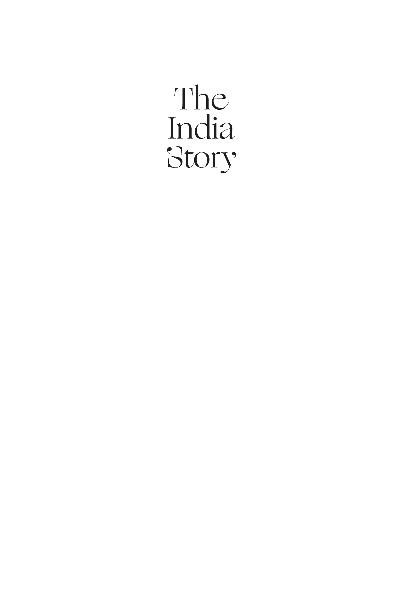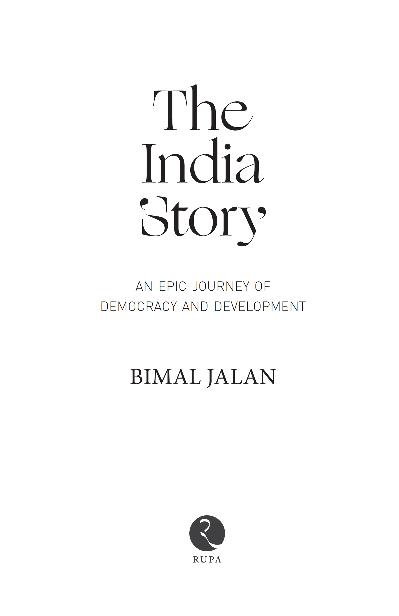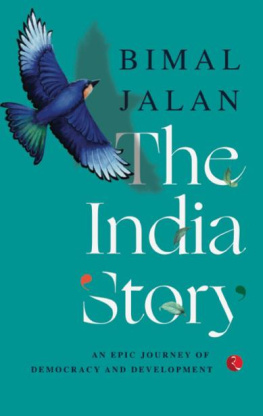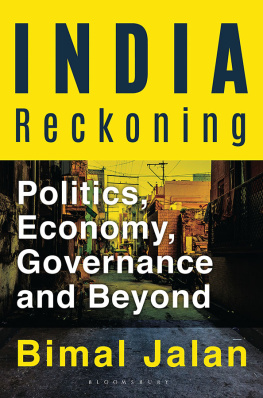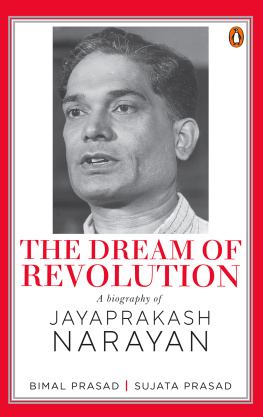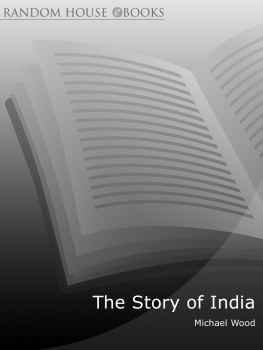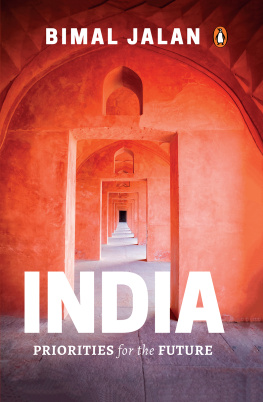First published by
Rupa Publications India Pvt. Ltd 2021
7/16, Ansari Road, Daryaganj
New Delhi 110002
Copyright Bimal Jalan 2021
The views and opinions expressed in this book are the authors own and the facts are as reported by him which have been verified to the extent possible, and the publishers are not in any way liable for the same.
All rights reserved.
No part of this publication may be reproduced, transmitted, or stored in a retrieval system, in any form or by any means, electronic, mechanical, photocopying, recording or otherwise, without the prior permission of the publisher.
ISBN: 978-93-90918-81-2
First impression 2021
The moral right of the author has been asserted.
This book is sold subject to the condition that it shall not, by way of trade or otherwise, be lent, resold, hired out, or otherwise circulated, without the publishers prior consent, in any form of binding or cover other than that in which it is published.
INTRODUCTION
Not too long ago, it had seemed that coalition governments were going to become a permanent feature of our country. Such governments, because of their very nature, pose a challenge to the reform process because consensus building between coalition partners can be a tiresome affair. So, when it seemed that coalitions were here to stay, one assumed that reforms and good governance may have to take a back seat. After all, the constant pushes and pulls of coalition partners often mean that even those behind the wheel of that coalition cannot exert their full power and potential.
Since 2014, however, the political profile of the Indian government has changed dramatically. Even while it has collaborated with other parties, the Bharatiya Janata Party has formed the government at the Centre with a full majority of its own, and that too for a second consecutive term (2019). This puts the party in a position to launch political and economic reforms to promote Indias overall national interests.
It is against this background that I present this volume, which recounts Indias experiences over the years, for our learnings from the past can contribute immensely to the contemporary debate about our countrys approach to its economic and political reforms in the twenty-first century.
Divided into two sectionsLearning from our Economic Past and Beyond the Metrics of Economy, the essays in this volume look at the past with a view to making more informed decisions for Indias future. With essays on topics ranging from economic and political reforms to good governance, it is my belief that this book will be of interest not only to policymakers and professional experts but also to an informed general reader.
When we look back at events after the passage of time, we do so with the benefit of distance and wisdom. In the first section, we look at Indias economic past and the learnings we can draw from it to make more informed decisions in future. It may be mentioned that some of the points given below have been highlighted in my previously published books.
While the balance-of-payments (BOP) crisis of 1990 is referred to often, Indias trajectory leading to that crisis had a brief period of recovery. This was between 1976 and 1979, when India witnessed substantial improvement in its BOP and foreign exchange reserve position. This brief respite came after a rather long period of almost two decadesfrom 1956 to 1975, which was marked by persistent BOP problems and it saw the beginnings of a slow process of industrial and import liberalization. What was disheartening, however, was that we couldnt sustain the brief period of recovery. The sharp increase in the cost of Indias oil imports in the 1980s resulted in the deterioration in terms of trade and hence, the BOP problems re-emerged, which eventually culminated in the BOP crisis of 1990.
Understanding why we failed then can offer us great lessons to strengthen the future viability of BOP. And this is exactly what the chapter on Towards a Balance of Payments Viability aims to do. Highlighting certain issues in Indias trade policy, in this chapter, I talk about three important policy priorities: (i) the need to reduce the governments fiscal deficit; (ii) the need for certain modifications in the import-export policy; and (iii) the need of policy for commercial borrowings.
The BOP crisis of 1990 indeed triggered the need for India to look at things differently. In my next essay, titled After the Crisis: The Need for a New Strategy, I highlight Indias prospects and the need for a new strategy to overcome the problems faced by the country in accelerating the GDP growth rate and alleviating poverty. This essay emphasizes the need for restoration of macroeconomic stability, which is crucial for investment and growth. Important areas where there is immense potential for further investment include energy efficiency and a well-functioning financial system, with further rationalization of interest rate, special deduction in corporate tax rates for investments in new plants, liberalization of foreign investments, and improvement in the operational efficiency of infrastructure and the public sector. The key to higher economic growth is an efficient investment policy, and this is where India should concentrate in the future.
In the wake of the acute economic crisis of 199091, the new government of the time had also launched a series of economic reforms in 1991. In the chapter Trade, Investments and Capital Flows, we look at Indias position with regard to these three sectors and the action taken by the government to liberalize import-export trade, domestic investment policies and capital flows from abroad. The measures introduced by the government in these sectors were wide-ranging and led to increased competition in areas earlier dominated by monolithic public-sector enterprises. Our foreign exchange position was also stabilized, which further increased the growth potential of the economy and reduced poverty levels. Against this backdrop, this essay deals with certain critical policy initiatives that may be taken by the government to achieve political consensus across different political parties and regions. In the light of experience of other developing countries in respect of their successes and failures in achieving higher growth rates, it was considered desirable, in future, to learn from international experience, and work towards a more prosperous and poverty-free India in the twenty-first century. Since income disparities are still deeply entrenched in our society, India needs to make conscious and consistent efforts to stay on track in its efforts towards this important goal.
In a globalized world, where countries and their economies are constantly interacting with and influencing one another, we cannot map our economic future in isolation. Recognizing this, I cover the International Financial Architecture in my next essay. When the financial crisis occurred in East Asia after July 1997, it generated enormous international concerns over financial stability in the world. This crisis was sudden and unanticipated. Neither the countries themselves nor the credit rating agencies or the international financial institutions anticipated a crisis of such magnitude. The speed with which the crisis was transmitted to other countries took the global financial community by surprise, and the burden of market failure was shifted to governments and the public sector. In the end, the international financial institutions, in particular the International Monetary Fund (IMF), came to the rescue of the affected countries, particularly Indonesia, South Korea and Thailand, which were the worst hit.
